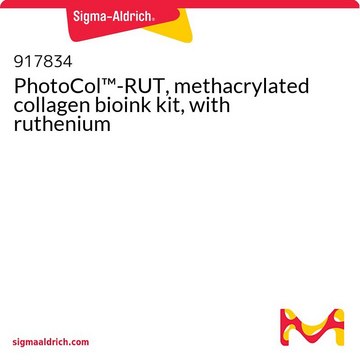916293
PhotoCol™-LAP
methacrylated collagen bioink kit, with LAP
Sinónimos:
3D Bioprinting, Bioink, Collagen
About This Item
Productos recomendados
descripción
Methacrylated collagen:
Degree of methacrylation ≥ 20%
Product components :
Nivel de calidad
esterilidad
sterile; sterile-filtered
formulario
liquid
impurezas
≤10 EU/mL Endotoxin
temp. de almacenamiento
2-8°C
Aplicación
Información legal
Código de clase de almacenamiento
10 - Combustible liquids
Elija entre una de las versiones más recientes:
Certificados de análisis (COA)
Lo sentimos, en este momento no disponemos de COAs para este producto en línea.
Si necesita más asistencia, póngase en contacto con Atención al cliente
¿Ya tiene este producto?
Encuentre la documentación para los productos que ha comprado recientemente en la Biblioteca de documentos.
Nuestro equipo de científicos tiene experiencia en todas las áreas de investigación: Ciencias de la vida, Ciencia de los materiales, Síntesis química, Cromatografía, Analítica y muchas otras.
Póngase en contacto con el Servicio técnico







